The best travel camera for 2025: the finest choices for your adventures

Setting off on your travels soon? If you're like me, one of the best travel cameras to capture those memories will be high on the packing list.
Having taken all manner of cameras on my travels down the years, based on what my itinerary looks like, I know there's no one-size-fits-all model. However, if I'm to take just one camera, it needs to check certain boxes; portability, performance, weather-sealing, stabilization and a good companion app to upload those snaps to name a few. Based on my checklist, the five star-rated OM System OM-5 II is a top pick for capturing standout shots on the go.
You might prefer a compact design, waterproofing or strong video credentials instead. As such, I’ve selected six of my favorite travel cameras to cover various travel photography needs, below. All of these options, together with suitable alternatives, come recommended following in-depth reviews in real scenarios. This guide is packed with my expert buying advice, plus you can also check out rumored upcoming models to watch out for, below, if your purchase can wait.

I'm TechRadar's Cameras Editor, with more than 15 years' experience as a photographer and tech journalist. I've traveled widely in that time, including several years spent living and making images across East Africa, and I know what really makes an excellent travel camera. There's no one-size fits all, but all of the options I've recommended below share a few key traits: each is relatively portable, handles well while on the move and is capable of producing impressive holiday photos.
⭣ Read more
Why you can trust TechRadar's choices
Every travel camera in this guide has been extensively tested by me or one of TechRadar's expert reviewers. Our experienced team has spent more than 15 years reviewing cameras in real-world scenarios, including the kind of demanding conditions you’re likely to face while traveling.
We review everything from compact point-and-shoots to flagships mirrorless hybrids. Our process looks beyond specs and image quality, to cover factors such as usability, handling and battery life, as well as low-light and autofocus performance. We also consider how well each camera suits travel, including its size and weight, its durability and its usefulness for stills and video.
Each camera featured here has earned its spot by performing reliably in the field and offering genuine value for travelers. Whether you're planning an epic trip or a weekend away, our recommendations are based on comprehensive hands-on experience, so you can choose with confidence.
Top 3 picks
If you don’t have time to read my full list of the best travel cameras, you can use this summary for a quick overview of the top options for your needs and budget. When you find one that takes your fancy, use the links to jump to the full write-up.

The best travel camera overall
Squeezing a host of features into a compact, weatherproof body that’s compatible with a range of lenses, the OM-5 II is the ideal travel camera.

The best compact travel camera
If you want a compact travel camera that slips in your pocket but has a large sensor that beats most smartphones for quality, then the GR IIIx is well worth a look.
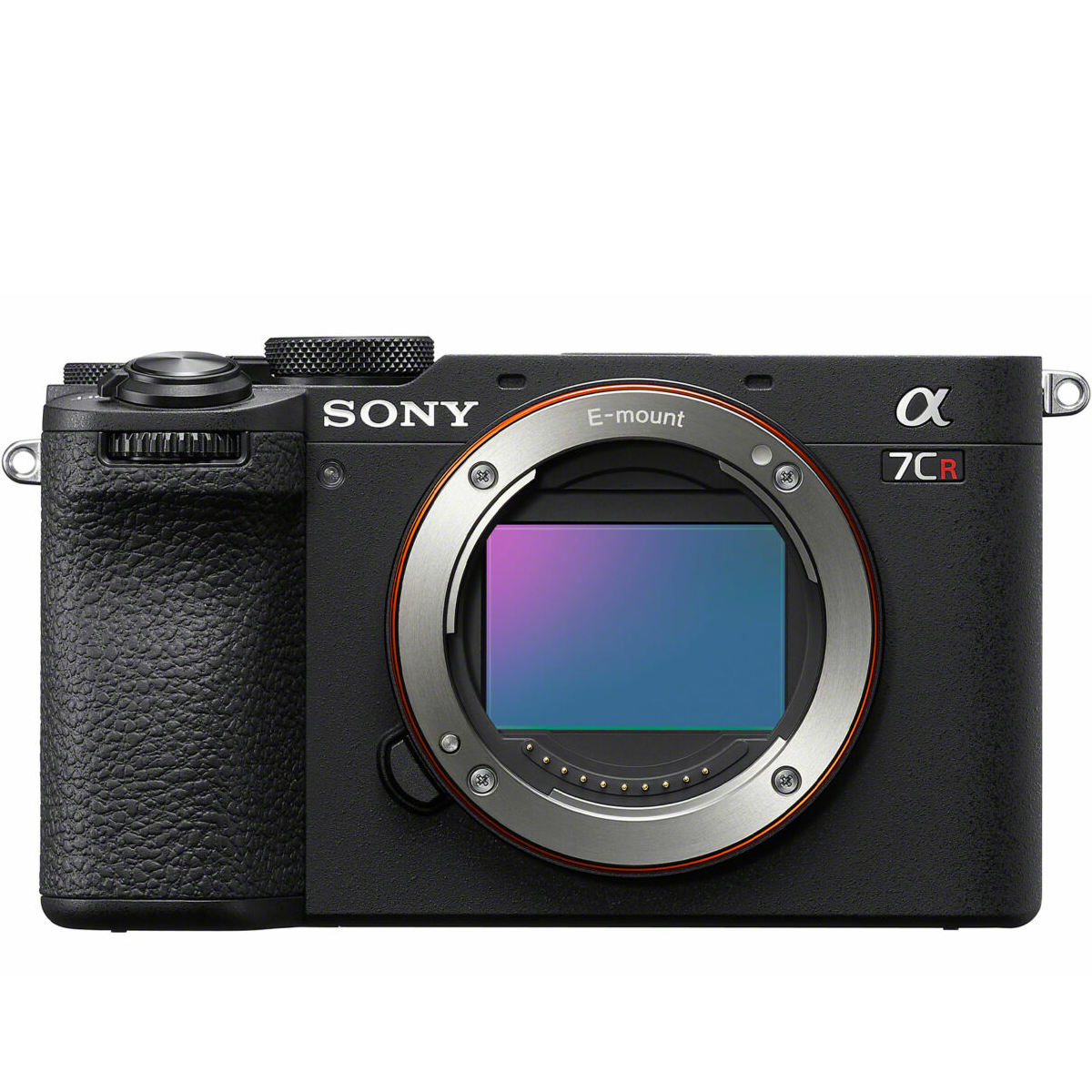
The best professional travel camera
Pairing a small form factor with a high-res sensor and fantastic autofocus, the A7C R is the best quality full-frame camera for travel stills.
Best by use-case

The best travel camera for video
Tiny, portable, low-cost yet packed with powerful video features, the X-M5 is an ideal travel companion for budding travel video makers.
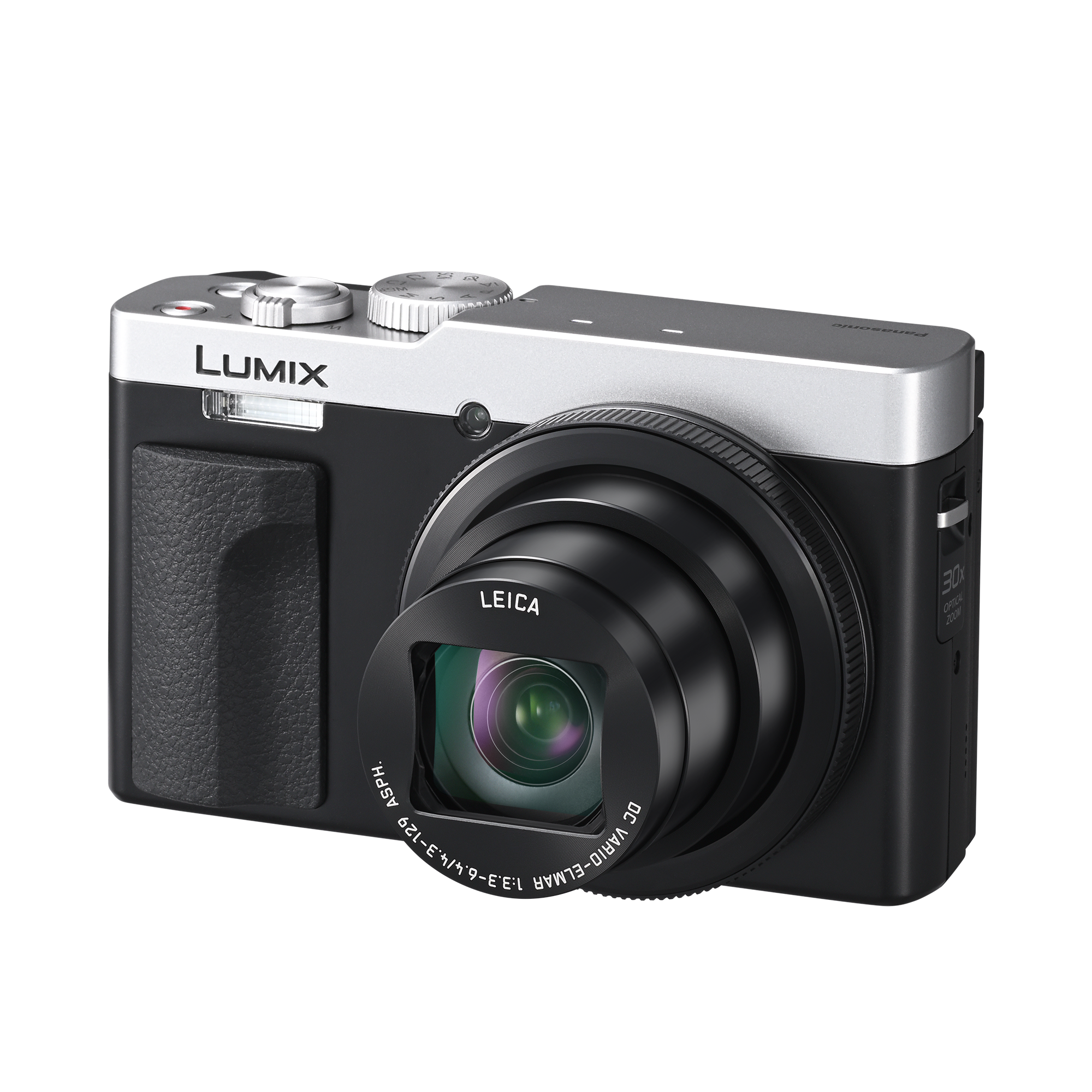
The best travel zoom compact
Panasonic brought back this classic travel zoom compact in 2025, a refreshed version with 30x optical zoom and USB-C charging.

The best waterproof travel camera
When travel gets tough, the rugged TG-7 comes into its own, with a hardcore build and foolproof interface for tricky conditions.
The best travel cameras in 2025
Why you can trust TechRadar
Below you'll find full write-ups for each of the best travel cameras in our list. We've tested each one extensively, so you can be sure that our recommendations can be trusted.
I've suggested worthy alternatives for each entry, plus there's an additional Also Consider section below with further suggestions if you still haven't found what you're looking for.
The best travel camera overall



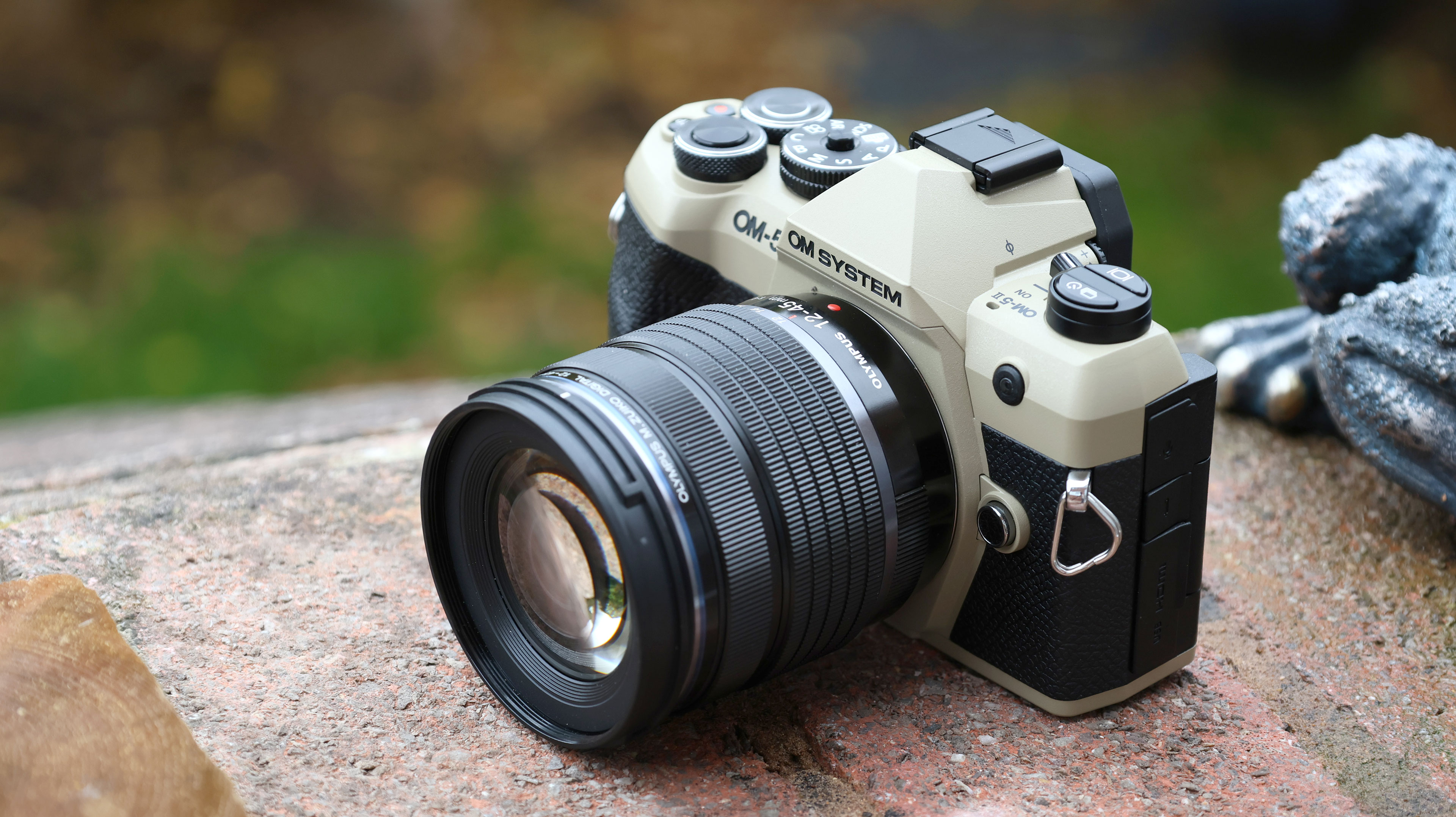

Specifications
Reasons to buy
Reasons to avoid
OM System OM-5 II sample images





✅ You want a robust travel camera: Light enough to travel with but tough enough to deal with bad weather, the OM-5 II is a ruggedly dependable camera.
✅ You shoot handheld a lot: The OM-5 II has excellent image stabilization for stills, meaning you can cross a tripod off your packing list.
❌ You want the best image quality: Its Micro Four Thirds sensor is decent enough, but some rivals offer more pixels and better low light performance.
❌ You have large hands: Handling is surprisingly good for a small camera, but the grip is not very deep, especially for those with bigger hands.
The OM-5 II is a just minor update of the OM-5 – adding the travel-friendly feature of USB-C charging – which in turn makes it a small update of the model before that, the Olympus OM-D E-M5 Mark III. But, as the adage goes, "if it ain't broke, don't fix it".
Yes, the OM-5 II's combination of talents sees it check every box in my 9 useful features to look for in a travel camera, shoehorning excellent in-body image stabilization, close focusing skills and computational photography modes into a compact weatherproof body that's compatible with a wealth of equally small lenses – it's the epitome of an ideal travel camera in my book, for an unbeatable price.
Our tests found that the OM-5 delivers excellent video and stills quality for its size, helped by a stabilization system that gives you a high hit-rate of keepers, as well as in-camera software tricks, like Live ND and in-camera focus stacking. Excellent ergonomics and the high-quality feel of the camera's dials complete the package.
Is the OM-5 perfect? No – it has a fairly average EVF, just 4K 30fps video and relative limitations of its smaller sensor, including 20MP stills bettered by rivals. However, these are all acceptable trade-offs considering this camera's size and price. If you can live without USB-C charging, then the OM-5 has dropped in price and is even better value.
Read our in-depth OM System OM-5 II review
Also consider...
- Nikon Z5 II – another mirrorless camera with weather-sealing, the Z5 II packs a 24MP full-frame sensor and superb ergonomics.
- Canon EOS R7 – This flagship APS-C model from Canon has a 32MP sensor and blazing fast burst shooting speeds, and it's weather-sealed.
The best compact travel camera





Specifications
Reasons to buy
Reasons to avoid
Ricoh GR IIIx sample images






✅ You go on city breaks: It's small and discreet for city photography, where its poor battery life and less than desirable build quality aren't so much of an issue.
✅ You want smartphone-beating picture quality: Its large sensor and sharp lens, together with gorgeous color profiles, mean the GR IIIx produces lovely results.
❌ You want a powerful zoom: The GR IIIx's lens is fixed, which means it's sharp but it can't zoom in on distant action and landmarks.
❌ You shoot video a lot: With a basic video spec of just FHD video and mono audio, the GR IIIx is a photography first camera way behind today's smartphones for video recording.
If you want a truly pocketable camera with excellent image quality, the Ricoh GR IIIx is my top pick – in fact, I personally bought one instead of the latest iPhone. It packs an APS-C sensor, the kind you usually find on bigger mirrorless cameras. It's also equipped with a fixed 40mm f/2.8 lens, which has the ideal focal length for everyday photography (the original GR III has a wider 28mm focal length but is otherwise identical). Putting the sensor and lens together, combined with lovely in-camera color profiles, means the GR IIIx is capable of rich, pin-sharp stills. We found its clever snap focus setting is also particularly well-suited to street photography.
The GR IIIx isn't perfect: there's no built-in flash, battery life is poor, the touchscreen is fixed and it won't stand up to rigorous treatment. However, you're making those compromises to obtain what is the best image quality of any camera this small. This is one of the few true compact cameras still being manufactured in 2025, and for me it's perfect for city breaks and general travel reportage-style shots.
*Ricoh has since released the GR IV – a modest update of the GR III which will be discontinued. I'm yet to review the GR IV, but it will likely replace the GR IIIX here as a top travel pick.
Read our in-depth Ricoh GR IIIx review
Also consider...
- Fujifilm X100VI – if you can live with a larger body, then the X100VI is another top compact camera pick, with 40MP stills, 35mm f/2 lens and all-round better performance.
- Ricoh GR IV – Ricoh's latest compact has an upgraded 26MP sensor with better stabilization, plus more built-in memory. It's an otherwise modest and pricier update.
- Leica D-Lux 8 – a slightly smaller micro four thirds sensor is offset by the convenience of a standard zoom lens and fast maximum aperture.
The best travel camera for professional photographers


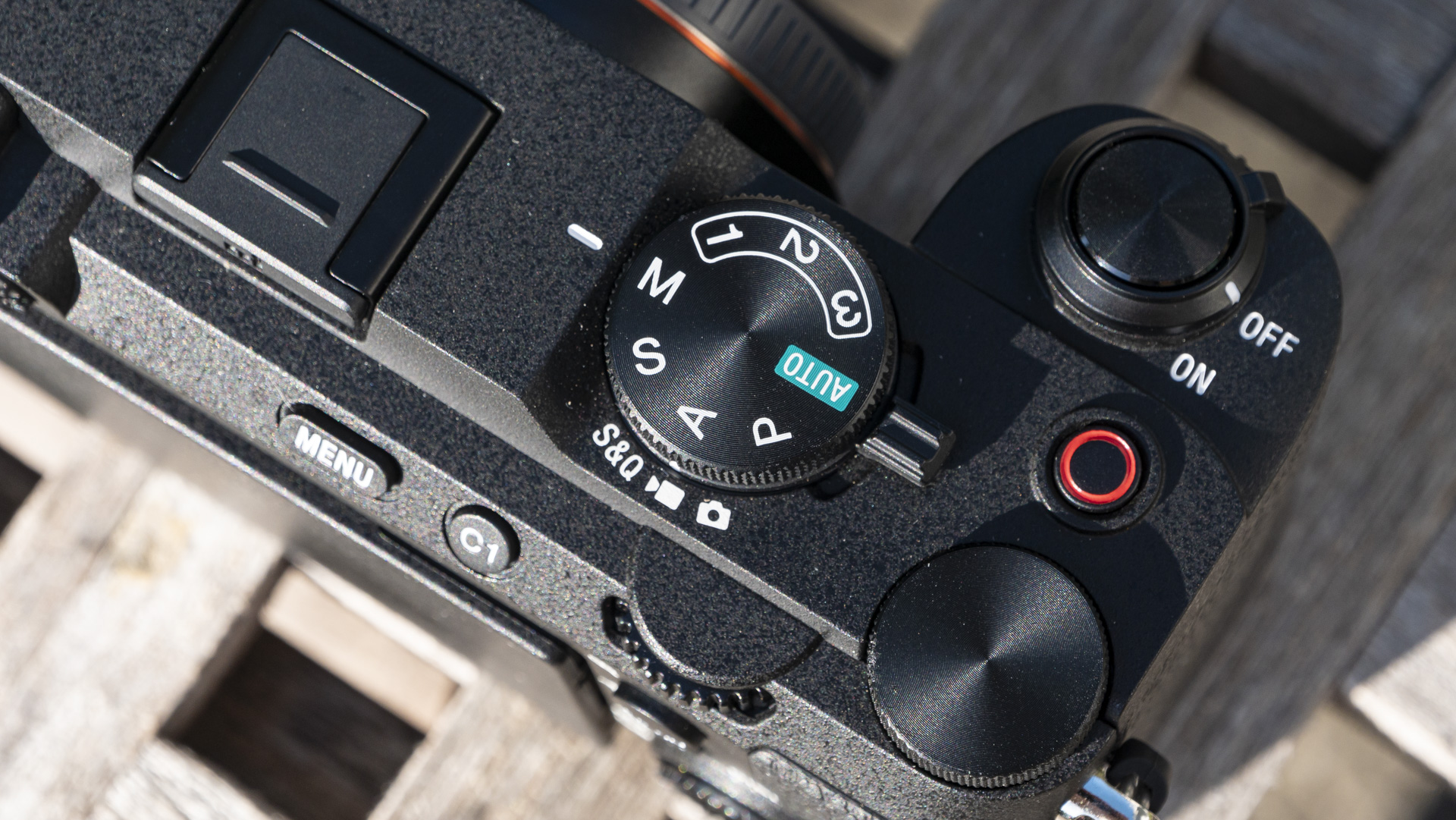


Specifications
Reasons to buy
Reasons to avoid
Sony A7C R sample images





✅ You want the sharpest stills: With a 61MP full-frame sensor, you won’t get sharper travel snaps from any other camera in this list.
✅ You want a small, powerful camera: Despite the full-frame sensor inside, the A7C R is very compact and fits neatly in the hand.
❌ You value good handling: The small design has drawbacks, including a compromised viewfinder and absent AF joystick.
❌ You plan to use big lenses: Its compact proportions mean the Sony A7C R is mismatched with larger telephoto lenses.
By combining a small, travel-friendly form factor with a 61MP full frame sensor and fantastic autofocus, Sony has created arguably the ultimate travel camera. Successor to the Sony A7C – already one of our favorite travel photography tools – and announced alongside the A7C II, the A7C R fits nicely in the hand, while a flip screen and new dials offer welcome control.
Equipped with Sony’s top-grade autofocus and AI-powered subject tracking, the A7C R can cleverly and reliably track a broad range of subjects. You won’t find a better full frame sensor, either: borrowed from the A7R V, it captures stunning, pin-sharp stills in all conditions. Cropping potential is vast, and video footage is decent too.
There are trade-offs, though. In testing, we found that the A7C R’s compact proportions come with handling compromises, especially compared to the traditional design of the A7R V. The viewfinder feels small and fiddly, and we wish Sony had included an AF joystick. It’s also not a camera to pair with large telephoto lenses. But the real kicker is the cost: it’s significantly more expensive than the A7C II. That premium means it’s only a camera to consider if you need absolutely the best possible image quality on your travels.
Read our in-depth Sony A7C R review
Also consider...
- Fujifilm X-E5 – another rangefinder-style mirrorless camera, the X-E5 is like the X100VI, but with the refined design and the convenience of the Fujifilm's X-mount. It's not weather-sealed, mind you.
- OM System OM-1 II – the high-end alternative of the OM-5 II, the OM-1 II has flagship features in a similar size body.
The best travel camera for video




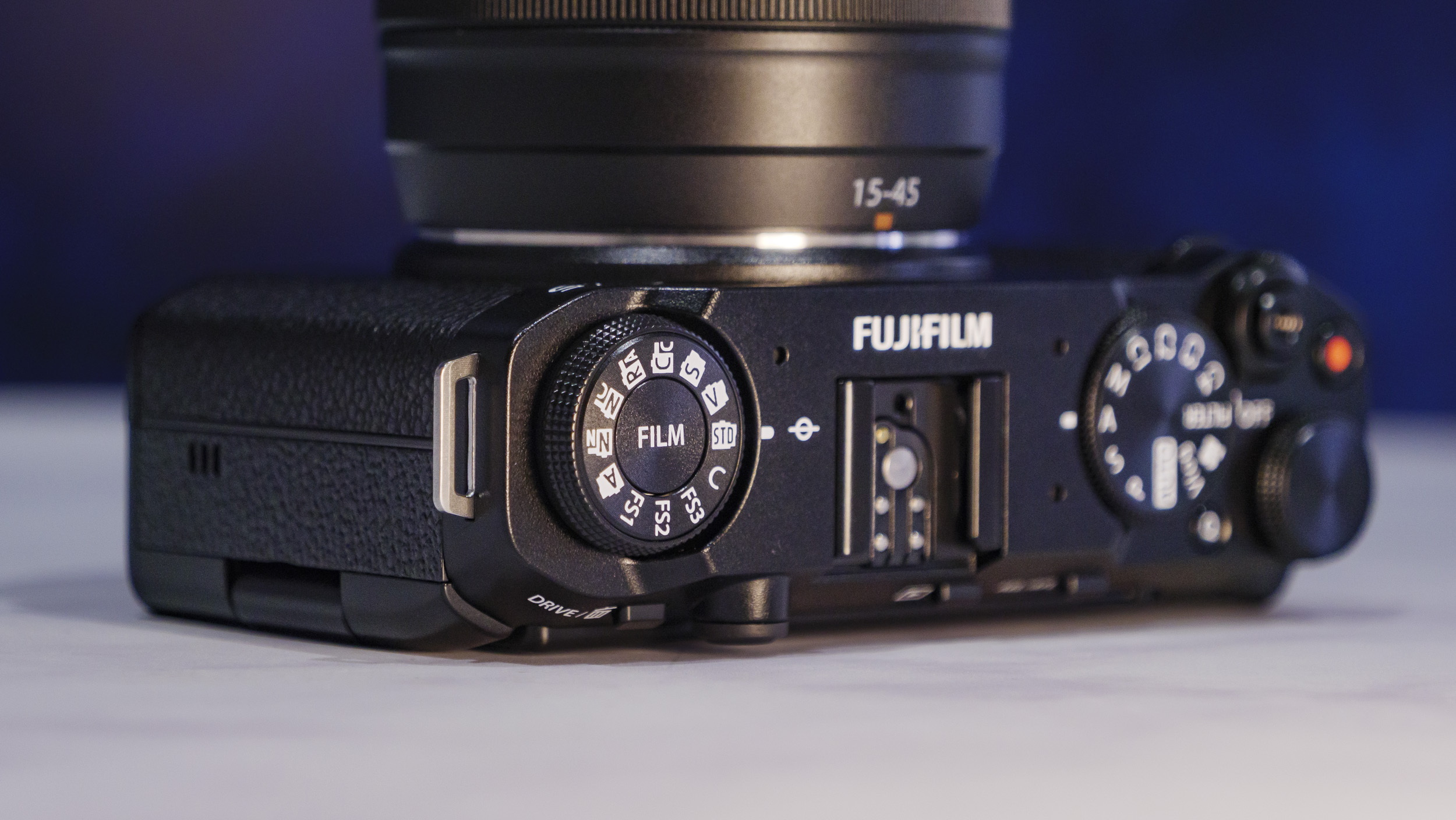
Specifications
Reasons to buy
Reasons to avoid
Fujifilm X-M5 sample images





✅ You want affordable 6K and social video: the X-M5 features open gate 6K footage in 10-bit color depth, a 9:16 short movie mode, and film simulations – features that belie its entry-level price.
✅ You want a compact and discreet mirrorless camera: The X-M5 sure is tiny, lightweight and capable camera, making it a great option for city break vlogging.
❌ You mostly shoot video on the move: As an entry-level model, the X-M5 misses out on in-body image stabilization, so footage on the move can look shaky unless you pack a gimbal.
❌ You have large hands: The X-M5 sure is tiny, its control layout cramped, meaning you could regularly hit the wrong buttons.
If travel video is higher on the agenda for you than photos, then you can't go wrong with the entry-level Fujifilm X-M5, which in my book offers beginners the best video bang for buck. It crams open gate 6K video with 10-bit color depth and Fujifilm's popular film simulations into a tiny and discreet low-cost body. And you don't have to shoot 6K – there's a capable 4K 60fps slow motion option and 9:16 vertical short movie mode for social media-friendly 1080p clips.
Video is also served by a smartly placed mic port, which sits close to a hotshoe for high-quality external mic audio, safely out of the way of the versatile flip-out touchscreen, which is a handy feature for selfies.
Two strikes against the X-M5 for travel are the lack of image stabilization (IBIS) and weather-sealing, but let's be clear, no camera anywhere near this pricepoint offer those features. Sure, no IBIS limits the X-M5's usefulness for run-and-gun filmmaking, but it is otherwise a truly impressive performer, with solid 26MP stills to boot. If you like the sound of the X-M5 but shoot more stills, then the X-T30 III is a better choice pick with its built-in viewfinder.
Read our in-depth Fujifilm X-M5 review
Also consider...
- DJI Osmo Pocket 3 – the ultimate portable vlogging camera, the popular Pocket 3 packs a gimbal-stabilized 4K camera which can switch between vertical and horizontal aspect and front of selfie shooting at the push of a button.
- Canon PowerShot V1 – the V1 upgrades the trending G7X Mark III with a larger sensor, better autofocus, built in ND and handy 3.1x optical zoom.
The best travel camera with zoom





Specifications
Reasons to buy
Reasons to avoid
Panasonic Lumix ZS99 / TZ99 sample images





✅ A versatile zoom tops your wishlist: the ZS99 / TZ99's 30x optical zoom covers wide shots through to distant close ups, which could make all the difference to your travel snaps.
✅ You have limited means: you won't find many leading brands with truly affordable travel zooms in their range these days – the Lumix ZS99 / TZ99 is an exception.
❌ You want smartphone-beating image quality: that versatile 30x zoom comes at an image quality cost – a similar priced smartphone's main camera will likely shoot better quality photos.
❌ You like using a viewfinder: Unlike the 2019 model it replaces, the Lumix ZS99 / TZ99 doesn't have a viewfinder, which is a really useful features for photography in bright light especially.
If a versatile zoom range tops your travel camera feature wishlist, then your options are few – travel zooms have largely been phased out. That said, Panasonic bucked the trend by releasing the Lumix ZS99 / TZ99 in 2025 with a useful 30x optical zoom and 24-702mm range that covers everything from wide vistas to close up of distant details. No phone comes close.
Sadly, the Lumix ZS99 / TZ99 was a disappointing upgrade of 2019's discontinued Lumix ZS80 / TZ95 which it replaces. It added USB-C charging, which is a supremely helpful travel camera feature, but misses out on a built-in viewfinder this time – that's a downgrade in my book.
I reckon the touchscreen which can flip up 180 degrees for easy selfies is a nice touch, while serviceable 4K videos and 20MP stills with that huge zoom range, make the ZS99 / TZ99 an ideal compact travel camera for everything from city breaks to safaris. Sure, image quality suffers, but this is an affordable and discreet option that can go where you go, for trips where precious pricey gear would otherwise stay behind.
Read our in-depth Panasonic Lumix ZS99 / TZ99 review
Also consider...
- Sony Cyber-shot RX10 IV – the best bridge camera ever made, the RX10 IV has a 24-600mm f/2.4-4 lens, larger 1-inch sensor and fast and accurate autofocus. Recently discontinued, it's still a high-quality versatile all-in-one zoom camera for travels.
- Sony Cyber-shot RX100 VII – also with a higher-quality 1-inch sensor and stills, the RX100 VII is another travel compact with zoom – limited to 24-200mm but with much higher quality across the range, and superb supporting features.
The best waterproof travel camera





Specifications
Reasons to buy
Reasons to avoid
OM System Tough TG-7 sample images





✅ You want a hardcore camera: With a case that’s waterproof, shockproof and freezeproof, the OM System Tough TG-7 is built to take a beating.
✅ You like a simple interface: Premium features include RAW shooting and 4K video, but the camera itself is easy to operate, even in tricky conditions.
❌ You want the best image quality: Results from the 1/2.3in sensor are fine, but the TG-7 tends to overexpose, and detail is lost at the telephoto end.
❌ You like using a viewfinder: The Tough TG-7 doesn’t have a viewfinder, and the 3-inch LCD screen has limited visibility in bright sunlight.
Tough cameras like the TG-7 are freeze-proof, shockproof and waterproof and can therefore be used in scenarios that you simply wouldn't consider with your phone or expensive camera. For that reason, the TG-7 is still one of the best travel cameras you can buy for photography. Its industrial design feels reassuringly rugged, while large buttons make it convenient to operate beneath the waves or while wearing gloves, plus its 3-inch LCD display offers decent visibility in most conditions.
Don't hold too high hopes for image quality, though – yes, it's reasonable for a camera with a 1/2.3-inch sensor, with nice, rich colors – but it soon hits a ceiling, with a tendency to overexpose and blow out highlights. It's 4x zoom range (25-100mm equivalent) is fair, plus the inclusion of 4K video and raw shooting enhance flexibility. Image quality might not match your phone for regular photos, but the TG-7 will allow you to be capturing extreme travel memories when you otherwise couldn't, plus there's a range of useful accessories such as a ring light for close up photography.
If you're more likely to shoot video in or around water, then action cams like the Hero 13 Black, DJI Osmo Action 5 Pro and Insta360 X5 are a better pick – I wrote a piece about why action cams beat mirrorless for vacations which unpacks this topic.
Read our in-depth OM System Tough TG-7 review
Also consider...
- GoPro Hero 13 Black – My current fave action camera, with 5.3K video, superb stabilization and auto-detected lens mods, and yes 33ft / 10m waterproofing which can be improved with housing.
- Insta360 X5 – probably the most versatile waterproof camera is the X5, with its 8K 360-degree coverage, invisible selfie stick, and 4K single camera modes.
Also consider
Naturally, with such a diverse list of products there were plenty of honorable mentions that didn't make the cut. Here's the best of the rest travel cameras also worth your attention:
Best (discontinued) travel zoom – Panasonic Lumix TZ200: If you're looking for versatility in a truly pocketable camera, the Lumix TZ200 could be the ticket. It's a travel zoom compact with an impressive 15x optical zoom range, plus a 1.0-inch sensor for smartphone-beating image quality. However, it has been discontinued, so you might find it a challenge to buy new.
Best for safari – Panasonic Lumix G9 II: Like the OM System OM-5, the Lumix G9 II features a Micro Four Thirds sensor which means it enjoys a wide range of lightweight high-quality lenses. However, it's an altogether more powerful camera especially for wildlife photography, competing with OM System's flagship OM-1 II.
Best trending compact – Canon PowerShot G7X Mark III: Another compact camera worth considering for your travels is the G7X Mark III, at least if It-Girls on TikTok have anything to say on the matter. The trending camera for 2024, the G7X Mark III is capable in its own right, with a decent 1-inch sensor, versatile zoom lens and powerful features. However, it's not great value right now given its popularity and skyrocketing price.
Best for moving subjects – Sony A6700: Sony's best mirrorless camera with APS-C sensor is impressively powerful and compact, with a superb 26MP sensor and 4K video up to 60fps plus slow motion modes, ably supported by Sony's excellent autofocus. There's also plenty of lovely lenses to choose from, and they're typically smaller than those used by Sony's full-frame cameras.
Best for vlogging – DJI Omso Pocket 3: These days, travel and vlogging go hand-in-hand and if creating dynamic and super-smooth 4K video clips of your travels is your top priority, then DJI's Osmo Pocket 3 is our top pick. Super small and equipped with a 1-inch sensor, the Pocket 3 is one of the most loved vlogging camera by content creators and sits in top spot of our best vlogging cameras guide.
Best full-frame premium compact – Leica Q3: It comes with a serious premium, but very few cameras can match the tactile shooting experience offered by the Leica Q3. It has a beautifully minimalist design with just the right amount of manual controls. Its packaging is reassuringly sturdy, yet tidy enough to travel with. Pairing a pin-sharp 28mm lens with a 60.3MP full-frame sensor, stills are unsurprisingly stunning. This is a very appealing everyday camera.
Best DLSR for travel – Nikon D7500: The D7500 hits the right mix of affordability, quality and compact ruggedness. It's 20.9MP sensor is capable of high-quality stills in any light, while superb ergonomics ensure it handles really well. It's often on sale with a versatile zoom lens for below $1,000 / £1,000, while there are plenty decent, cheap secondhand lenses to choose from.
Upcoming travel cameras

These are both confirmed and rumored successors to top models in this guide, that I'm yet to test or yet to be confirmed. Of those, the most notable cameras include the Ricoh GR IV (along with upcoming 'HDF' and 'Monochrome' variants), which replaces the GR III which sits as a top travel compact camera pick.
The GR IV looks like a modest upgrade, but a couple of handy features stand out for travel – improved stabilization, and more built-in memory, now up to 52GB. Despite being much pricier, I still expect it to replace the GR III in this guide.
DJI looks set to announce the Osmo Pocket 4 vlogging camera soon, two years after the Pocket 3 landed and which has gone on to become one of the best selling cameras across the world. Honor unveiled the development of its Robot Phone, which could compete with the Pocket 4.
For the first year in a decade, GoPro is not launching a new flagship Hero Black model, so it looks like we'll have to wait another year for a potential Hero 14 Black. The action cam giant announced the Max 2, a 360 camera, and the Hero (2025) instead.
Elsewhere, there are whispers of a new Panasonic LX100 III in the works, as well as a rumored Canon PowerShot superzoom, which could surface by the end of the year. Both have the potential to mix things up among travel-friendly premium compacts, although neither has been officially confirmed.
How to choose the best travel camera for you

How to choose the best travel camera
Picking the right travel camera can be trickier than finding affordable flights. You’ll want a shooting tool that’s compact enough to conveniently carry on your travels, not so pricey that you can't risk taking it out and about, yet still capable of capturing sharp stills and stable video of your jet-setting adventures.
I've put together my top 9 features I look out for in a travel camera.
To summarize, key things to keep in mind when choosing your ideal travel camera include the following:
Size
Among the most important is size. While pocketable compacts offer convenience, the quality of your travel snaps will be boosted by the bigger sensors of larger mirrorless models.
Ruggedness
If your adventures are likely to involve going off the beaten track, it’s worth considering a travel camera with rugged credentials. This could be one of the best action cameras, such as the GoPro Hero 13 Black – perfect if you plan to shoot quick, slick travel clips. Or it could be a sturdy compact such as the OM System TG-7, which is one of the best waterproof cameras.
Zoom
It’s also worth thinking about what subjects you might be shooting on your trip. A long zoom range will be handy on safari, while something light and fast is better for capturing street snaps on a city break. Travel compacts, such as the Panasonic Lumix ZS200 / TZ200, usually use a zoom lens to cover a range of shooting scenarios. Interchangeable lens cameras like the OM System OM-5 can similarly offer the flexibility of both worlds, but only if you’re happy to travel with extra barrels in your backpack.

Which type of camera is best for traveling?
Travel cameras come in a range of shapes and sizes. Which style is best for you will depend on how you like to travel, what you like to shoot and how much gear you’re willing to cart around.
Travel zooms
Travel zoom compacts such as the Panasonic Lumix ZS99 / TZ99 are pocket friendly, yet offer a broad scope for capturing a range of subjects. Thanks to generous zoom ranges, they give you the opportunity to get close to the action, or to shoot wide. The trade-off for having all of this flexibility in a compact body is generally a smaller sensor, which is less useful for shooting in low light.
Premium compacts
If you’d like neat proportions but don’t need the versatility of a zoom lens, premium compact cameras could be worth considering. Models such as the Fujifilm X100V sacrifice zoom range in favour of larger sensors that are better at gathering light – at least 1-inch, but in the case of the X100V, APS-C, and the Leica Q3 is larger still, being full-frame.
Bridge
Between compacts and mirrorless cameras is where you’ll find bridge cameras. Bulkier than a standard compact, they offer more comfortable handling and a large zoom range, but without the need to carry different lenses. New bridge cameras are increasingly rare, but the Sony Cyber-shot RX10 IV remains a great example.
Mirrorless
If you don’t mind traveling with multiple lenses, many of the best mirrorless cameras have been specifically designed with travel in mind. In the case of models like the OM System OM-5 II, that means a portable, weatherproof body, useful image stabilization for shooting on the move, plus a versatile Micro Four Thirds sensor that balances size and performance. And with lots of different lenses to choose from, you can pack different optics depending on the type of trip you’re taking – or opt for a reliable all-round option.

Is a DSLR or mirrorless camera better for travel photography?
When it comes to travel photography, most photographers look for a balance between portability and performance. If this is the combination you’re after, mirrorless cameras will almost always have the edge over their DSLR rivals. Mirrorless models – especially Micro Four Thirds – are generally smaller and lighter than DSLRs, making them easier to wield and travel with.
Despite their more compact proportions, many of the best mirrorless travel cameras can also match or outclass DSLR cameras when it comes to image quality, as well as autofocus abilities and video features. This makes them versatile tools for shooting on the move, especially if you choose a model with in-body image stabilization for sharp handheld results. If you pick a mirrorless camera with an established lens mount system, you’ll also find no shortage of glass to pack for your trip.
That said, there are reasons why you might still want to consider a DSLR camera for travel. Some photographers prefer the chunkier ergonomic grip for which the DSLR format is famous, especially if they plan on shooting for hours on end. The best DSLR cameras also offer superlative battery life, which can be useful if your travel plans include days away from electricity.
Budget might also be a factor, especially if you’re concerned about taking an expensive camera on your travels. Older DSLR cameras can offer great value, as can second-hand mirrorless models. It’s also worth looking at our round-up of the best cheap cameras, which includes some options that are a good fit for travel photography.
Read our in-depth DSLR vs Mirrorless comparison
Travel camera articles glossary
In addition to this in-depth travel camera buying guide, TechRadar has published several travel camera-related articles which further unpack the topic and give a steer for you purchase. I've included some of the top articles, below:
- Looking for a travel camera? Make sure it has these 9 useful features before you buy
- The DJI Osmo Action 4 has convinced me that action cams beat mirrorless for vacations
- Photography and hiking are my idea of a dream weekend – this is the perfect camera system I take into the great outdoors
- How to travel with film
- I used Claude AI to plan a photography trip, and it's going to change the way I plan shoots forever
- I took the new Fujifilm X-E5 and pancake lens on a city break, and they're a dream pairing for travel photography
- Best point-and-shoot camera 2025: top picks for simple shooting
Meet the team
Collectively, our team of reviewers has amassed over a hundred years of camera experience and testing in the real world, covering all of the latest and greatest cameras in the last 20 years.

As Cameras Editor, Tim looks after all cameras content on Tech Radar. This includes buying guides, opinions, reviews and news, and covers anything from mirrorless cameras to film and smartphones. He has been cutting his teeth in the photo and video industry for almost 20 years.

Lauren Scott is an experienced journalist and freelance photographer based in Bath, UK. She's been in the industry for over ten years; as the former Managing Editor of our sister site Digital Camera World, Editor of Digital Photographer magazine, and Technique Editor for both PhotoPlus and Digital Camera magazines.

Rod is an independent photographer and photography journalist with more than 30 years' experience. He's previously worked as Head of Testing for Future’s photography magazines, including Digital Camera, N-Photo, PhotoPlus, Professional Photography, Photography Week and Practical Photoshop, and as Reviews Editor on Digital Camera World.
How we test travel cameras

☑️ 100s of cameras reviewed
☑️ 15 years of product testing
☑️ Over 16,000 products reviewed in total
☑️ Nearly 200,000 hours testing tech
Buying a camera these days is a big investment, and travel cameras are no different – so every camera in this guide has been tested extensively by us. For travel cameras in particular, real-world tests are the most revealing way to understand a camera's performance and character, so we focus heavily on those, along with standardized tests for factors like ISO performance.
To start with, we look at the camera's design, handling and controls to get a sense of how suitable it is for life on the road, and any particular features that might be particularly useful for globe-trotters. When we take it out on a shoot, we'll use it both handheld and on a tripod to get a sense of where its strengths lie, and test its startup speed.
When it comes to performance, we use a formatted SD card and shoot in both raw and JPEG (if available). For burst shooting tests, we dial in our regular test settings (1/250 sec, ISO 200, continuous AF) and shoot a series of frames in front of a stopwatch to see if it lives up to its claimed speeds. We'll also look at how quickly the buffers clears and repeat the test for both raw and JPEG files.

In various lighting conditions, we also test the camera's different autofocus modes (including Face and Eye AF) in single point, area and continuous modes. We also shoot a range of photos of different styles (portrait, landscape, low light, macro/close-up) in raw and JPEG to get a sense of metering and its sensor's ability to handle noise and resolve fine detail.
If the camera's raw files are supported by Adobe Camera Raw, we'll also process some test images to see how we can push areas like shadow recovery. And we'll also test its ISO performance across the whole range to get a sense of the levels we'd be happy to push the camera to.
Battery life is tested in a real-world fashion, as we use the camera over the course of the day with the screen set to the default settings. Once the battery has reached zero, we'll then count the number of shots to see how it compares to the camera's CIPA rating. Finally, we test the camera's video skills by shooting some test footage at different frame-rates and resolutions, along with its companion app.
We then take everything we've learned about the camera and factor in its price to get a sense of the value-for-money it offers, before reaching our final verdict.
Sign up for breaking news, reviews, opinion, top tech deals, and more.

Tim is the Cameras editor at TechRadar. He has enjoyed more than 15 years in the photo video industry with most of those in the world of tech journalism. During his time as Deputy Technical Editor with Amateur Photographer, as a freelancer and consequently editor at Tech Radar, Tim has developed a deeply technical knowledge and practical experience with cameras, educating others through news, reviews and features. He’s also worked in video production for Studio 44 with clients including Canon, and volunteers his spare time to consult a non-profit, diverse stories team based in Nairobi. Tim is curious, a keen creative, avid footballer and runner, and moderate flat white drinker who has lived in Kenya and believes we have much to enjoy and learn from each other.
- Mark WilsonSenior news editor
- Amy Davies
- Chris Rowlands